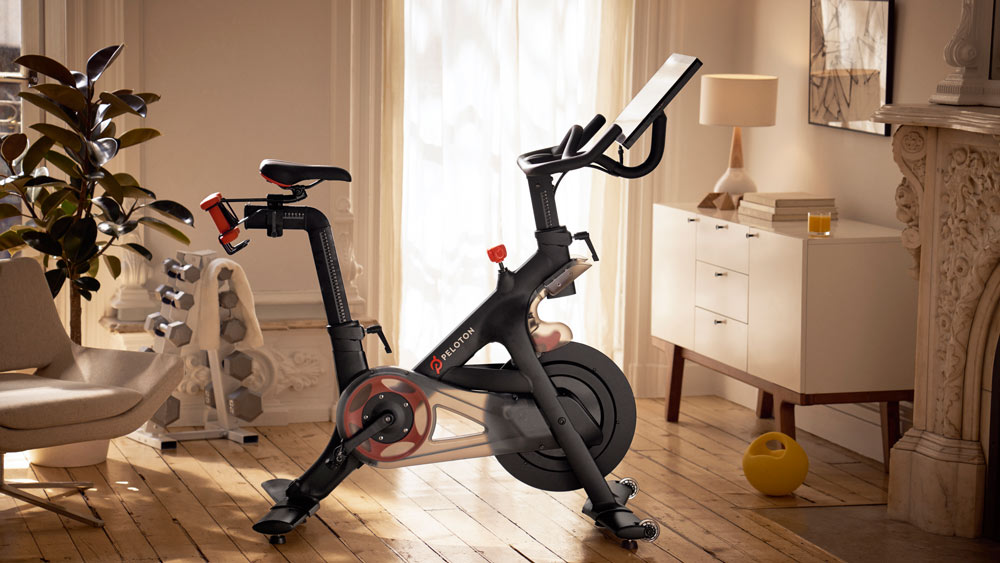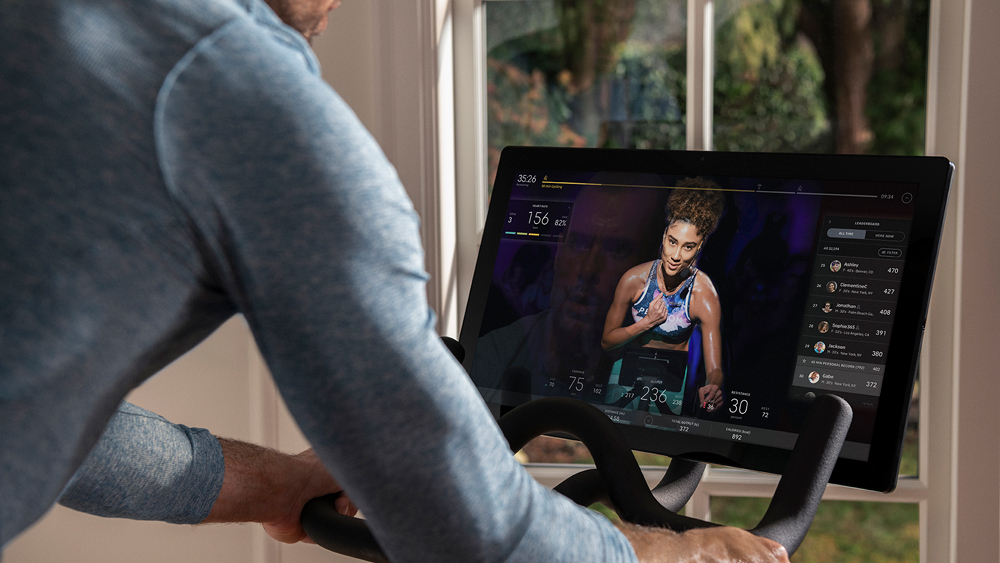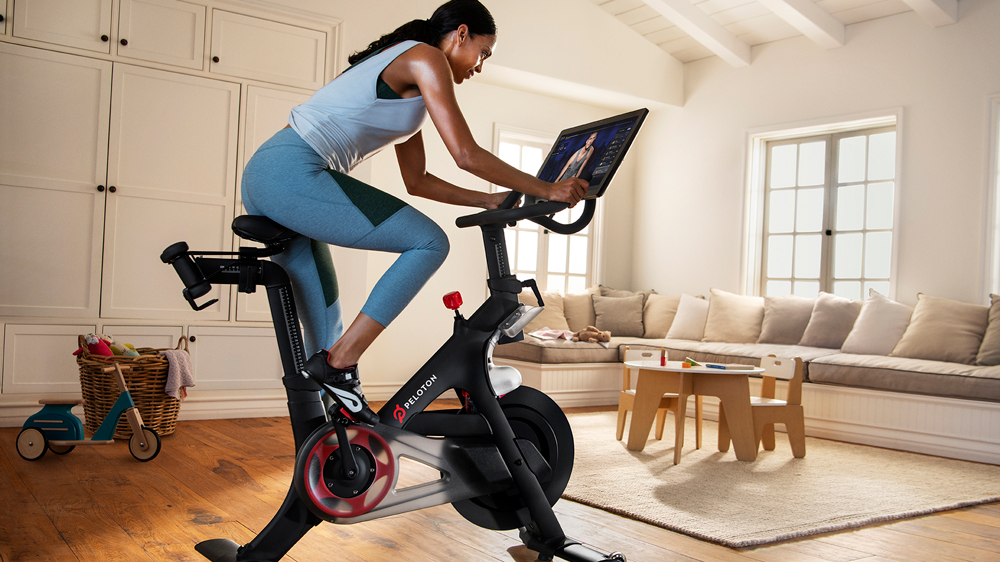Our Verdict
While it’s still far from cheap, the Peloton Bike is a lot more affordable than the top-of-the-range Peloton Bike+, and it still offers a fantastic home spinning experience thanks to the impressive app and built-in HD screen.
For
- Built-in HD screen
- Enjoyable workouts in partner app
- Cheapest Peloton option
Against
- Still expensive
- Can’t connect to third-party apps
You can trust Coach
Risible adverts aside, 2019 seemed like a pretty good year for Peloton. It established the idea that you could take spin classes at home with a stationary bike, a screen and a monthly subscription, and did so successfully enough that a raft of copycat bike-plus-app home spin bike options sprang up in response to its popularity.
After spending a couple of months using Peloton, I can see why it’s taken off. The set-up is phenomenally swish, with an impressive bike and a vast range of excellent classes from popular instructors. There are even non-spin classes in the app too, which you can follow on your phone or cast to a TV.
It comes at a price, however. The bike itself costs a minimum of £1,345, and you’ll probably want to spend more like £2,129 to get a package that includes shoes to clip in to the Peloton pedals plus a set of hand weights. On top of that, a monthly class subscription is £39.
Can such a pricy bike offer good value? I’d say there is an ideal audience for whom it’s perfect, but just as with a gym membership, you’ll definitely have to think long and hard about whether you’re going to use it long term, and what alternatives there are – like a gym membership, for one.
The Set-Up
The bike and system is very easy to set up, because installation is included in the price, and you’ll also get a quick run-through of the software once it’s up and running. Jump on the bike, turn on the large HD screen and browse the classes available, a task made easier by being able to filter by length, difficulty, type, instructor and more.
Resistance is controlled by a dial that allows you to ramp it up or reduce it very quickly, and during classes there are three primary stats on display: your cadence, the resistance and an estimate of your power output. All of these are used by the instructors in classes to explain how intense your effort level should be.
There are thousands of classes to try on demand, and there’s also a schedule of at least 14 live classes a day to join. During all classes a leaderboard pops up on the side of the screen so you can see how you compare with others who have taken the class in the past, and you can filter this by age range and sex to see how you compare with others in your demographic.
Sign up for workout ideas, training advice, reviews of the latest gear and more.
It’s easy to adjust the handlebar and seat height to fit you too, and you can use the pedals without special clip-in shoes, though the experience is definitely improved by having cleats.

The Experience
Peloton is brilliant to use. The screen is huge and makes for an immersive experience, and I rarely experienced drop-outs during live classes even though the bike was in my garage and not all that close to my internet router.

The classes themselves are exactly what you’d expect if you’ve ever tried a live spin class. The music is loud, and the instructors are even louder and unfailingly upbeat. Every spinning session is built up to incredible levels of importance, with all manner of motivational clichés thrown at you every time you’re asked to increase your effort.
It’s not quite as motivational as being in a studio with others tackling a class, but it’s really not far off, especially if you take a live Peloton class and join in a couple of minutes beforehand to see the instructor chatting to those in the studio where it’s being filmed.
You can also find a class to suit pretty much every aim, whether it’s a 90-minute sweatfest to boost your endurance or a 20-minute blast to get the heart pumping. There are classes aimed at keen cyclists that get more jargony, and there are classes aimed at complete beginners just designed to make you feel good about getting moving. You can also select based on your music taste and see the playlist in advance.
Peloton aims to bring the spin studio experience home and it does that superbly. On top of that there are plenty of other classes you can do too, including guided yoga, Pilates and strength sessions, and even outdoor runs and walks. I tried a strength session in the Peloton app and while it didn’t offer quite the same premium experience as spinning, it was solid enough. I couldn’t get the app or bike to cast to my Chromecast, but following the workout on my phone was easy.
If you’re a fan of spinning and the OTT motivational ethos of it, then Peloton delivers. I think I would start to tire of the incredibly earnest behests to increase my effort level, but then I’m a grouch and an obsessive runner who generally prefers the great outdoors to spinning inside, no matter how amazing the experience is. There are instructors who tone it down a bit, however, and once you find them it’s easy to search for their other classes.
Verdict

Peloton delivers on everything it promises, but there is still a question hanging over the sizeable outlay. If you get it to share with others in your home, and avoid paying for multiple gym memberships or regular spin classes as a result, the cost becomes far more reasonable. Extra user accounts are free, though you may need a separate set of cycling shoes to use with the bike.
Even for one very keen user the Peloton bike could be worth its price. It’s so easy to jump on and do a quick class, and it will help you get fitter quicker and burn a lot of calories in an enjoyable manner. It’s a convenient and premium experience, and the motivational boost of having the live classes definitely helps.
There are other ways to get classes at home, and you can link up far cheaper bikes to TVs, tablets and phones to get an ersatz Peloton experience. However, the Peloton screen and set-up are hard to rival, and those that do make a proper attempt at it like Echelon and Technogym Live end up costing similar amounts.
One alternative worth considering, if you want to get fit cycling at home but aren’t so sure about spin classes, is Zwift. You can get a good-quality set-up for comfortably under £1,000 assuming you already have a bike to put in a turbo trainer, and then the Zwift subscription is just £12.99 a month. A subscription allows you to cycle in virtual worlds, rather than the closed shop of a spinning studio, and take on classes and training plans where you ride in those virtual worlds. Zwift is much more focused on road cycling enthusiasts, however, and allows you to ignore all the jargon and just ride up a virtual volcano or through underwater tunnels.
Peloton often reduces the price of the Peloton Bike. Follow our coverage of Peloton Black Friday deals to see how much you could save.

Nick Harris-Fry is a journalist who has been covering health and fitness since 2015. Nick is an avid runner, covering 70-110km a week, which gives him ample opportunity to test a wide range of running shoes and running gear. He is also the chief tester for fitness trackers and running watches, treadmills and exercise bikes, and workout headphones.


